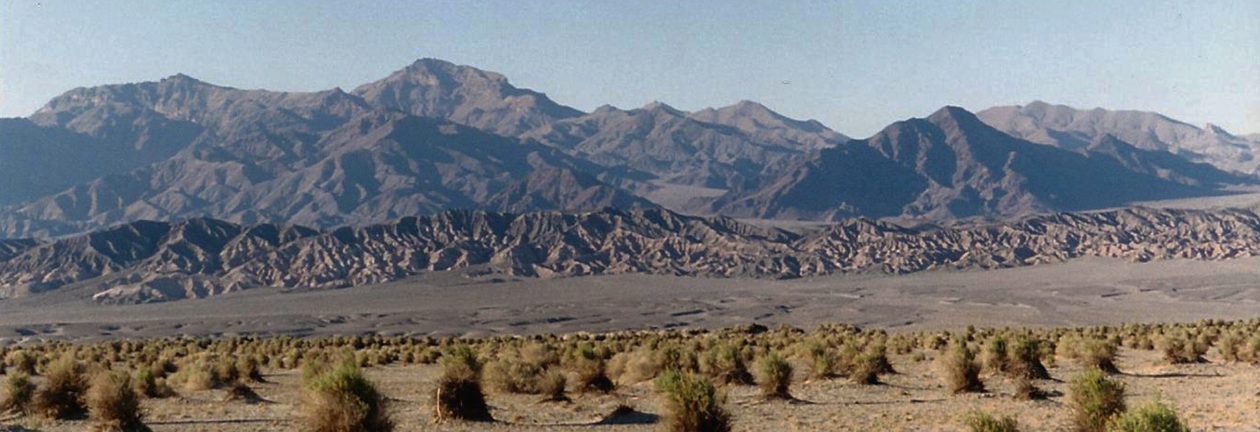Kathmandu, Nepal
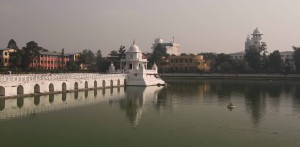
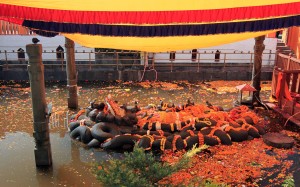
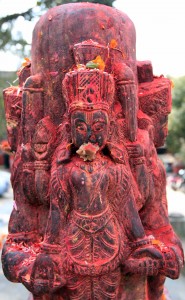
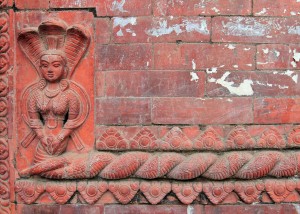
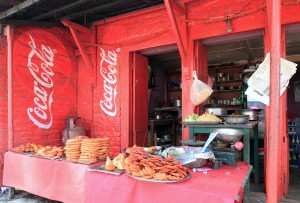
I woke up, had breakfast (fried eggs, toast with jam and butter, fried potatoes, and coffee), got ready, and then walked out to Ratna Park; along the way I passed by Rani Pokhari and took some pictures in the morning light. I then reached the street just north of Ratna Park, which has many minivans waiting for passengers, to take them around Kathmandu for only twenty rupees per person; I asked around and eventually found out which minivan goes north to Buddha Nilkantha Temple; I climbed inside the minivan, waited for the benches to fill with passengers, and then we were off (I was praying we did not get in to an accident). After about an hour of traveling through Kathmandu’s chaotic traffic (also passing by the President’s House), we reached the final destination, the last stop, near Buddha Nilkantha Temple; I exited the minivan, paid my fare, and then walked along the dusty road on the other side of an archway. After traversing a short distance, I reached Buddha Nilkantha Temple, walked inside, passing by some sculptures speckled in red paint, and then made my way to the main attraction: a large relief sculpture of Vishnu sleeping on a bed of snakes (it looks as though the Hindu god had been encased in carbonite) in the middle of a pond, with many flowers floating around him; I watched several worshipers approach the sculpted relief and donate money and flowers to his cause. I then walked out of the temple and found a minivan to take me back to Kathmandu. The traffic back to Kathmandu wasn’t nearly as bad, and I suppose the visit to Buddha Nilkantha Temple was worth two hours of my time and forty rupees. The minivan stopped north of Rani Pokhari, I exited, paid my fare, and walked back toward Thamel.

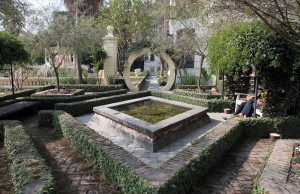
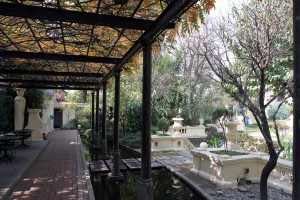
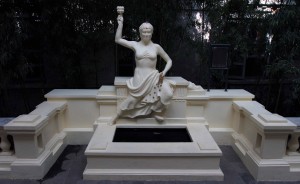
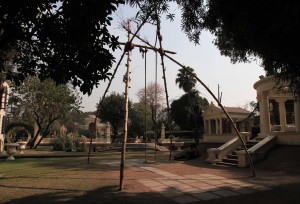
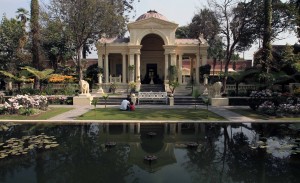
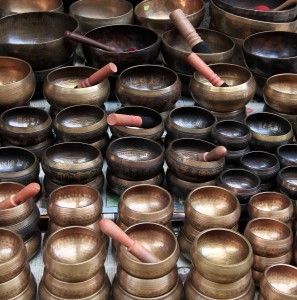
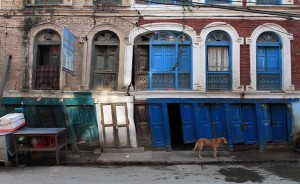
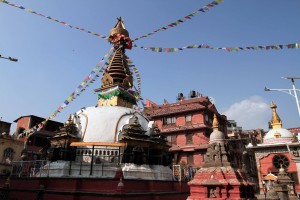
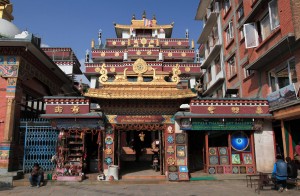
On the way back to Thamel, I stopped at the Garden of Dreams, which was built in 1920 AD and designed by Kishore Narshingh; it was created for Field Marshal Kaiser Sumsher Rana; after he died, it fell in to neglect, but was then renovated in the early twenty-first century with the help of the Austrian government. I entered in to te garden, walked around its splendidly arranged geometric design; I was considering having lunch there, but the prices were unreasonably high; so I just walked around some more, exploring every corner and nook inside the garden before deciding to leave; the garden would make an ideal spot to relax, read a book, or become more intimate with your girlfriend (well, not that intimate, it is still a public place). After exiting the garden’s grounds, I walked back in to Thamel, found a restaurant to refuel at, and had a burrito with a side of chips and salsa, and a beer. After lunch, I considered taking a taxi to the National Museum, but, as expected, the taxi driver was asking more than double a fair price; so I decided to walk for forty minutes, southwestward to the National Museum (the taxi driver will make do without my money – did I mention how much I loathe taxi drivers; scum of the Earth, they are).
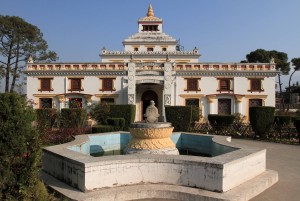
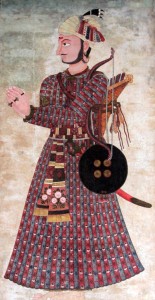
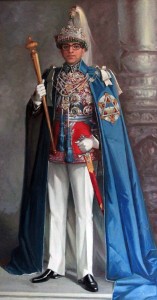
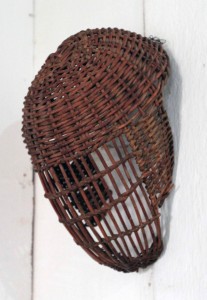

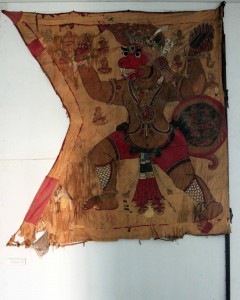
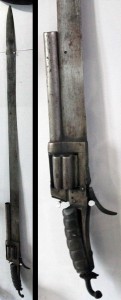
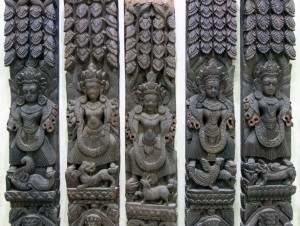
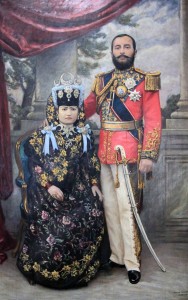
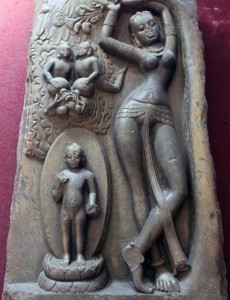
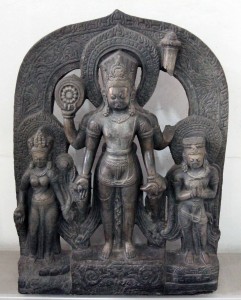
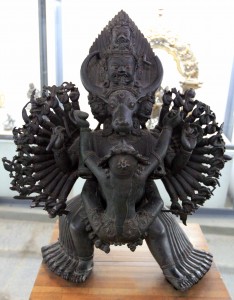
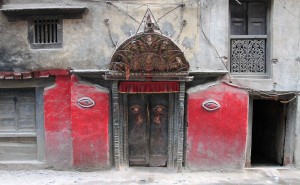
I walked through Thamel, through the Kathmandu Durbar Square (I just walked past the ticket counter (all foreigners must pay to enter) and no one stopped me; oh well, I was just passing through anyway); I then walked by Shree Gha, a small square with a decently-sized stupa and temple; next I crossed a bridge and walked past some military barracks before finally making it to the National Museum in the Chhauni district of Kathmandu at 14:40 (about one hour before closing time). The National Museum was the first public museum in Kathmandu and was opened in 1938 AD. The museum consists of three buildings; the first one is the Historical building and contains the stuffed animals found in Nepal, a doll collection from around the world, per-historic tools, military weapons and uniforms through the ages, examples of indigenous ethnic cultures, a portrait gallery, and a monetary and coin collection; the second building contains Buddhist art made in the different regions of Nepal throughout its history (mostly stone and metal sculptures, as well as a number of paintings); finally, the last building is dedicated to that other major religion in Nepal: Hinduism, and contains many Hindu works of art created throughout the ages. After rushing through the museum (since I only had one hour to see everything), I then walked back to my hostel in Thamel After about forty minutes, I reached the hostel and immediately began working on my website. Shortly past 20:00, I left to eat dinner and simply had a barbeque chicken burger with french fries; then I bought two bottles of Nepal Ice Natura beer (each 650 ml, made from natural barley (is there another kind?) and natural German hops; not bad, but I still prefer Everest beer in this country). I then stayed up past 03:00 working on the website before finally calling it quits and going to sleep.
